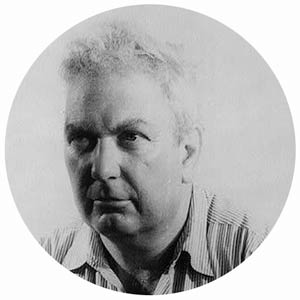
“How can art be realized? Out of volumes, motion, spaces bounded by the great space, the universe. Out of different masses, tight, heavy, middling—indicated by variations of size or color—directional line—vectors which represent speeds, velocities, accelerations, forces, etc. . . .—these directions making between them meaningful angles, and senses, together defining one big conclusion or many. Spaces, volumes, suggested by the smallest means in contrast to their mass, or even including them, juxtaposed, pierced by vectors, crossed by speeds. Nothing at all of this is fixed. Each element able to move, to stir, to oscillate, to come and go in its relationships with the other elements in its universe. It must not be just a fleeting moment but a physical bond between the varying events in life.
Not extractions,
But abstractions
Abstractions that are like nothing in life except in their manner of reacting.”
– From Abstraction-Création, Art Non Figuratif, no. 1, 1932.
Alexander Calder is perhaps best known for his large, colorful sculpture, which incorporates elements of humor and chance into uniquely engineered structures. Calder was born outside of Philadelphia to a successful, artistic family. His father and grandfather–both named Alexander Calder–were distinguished sculptors and his mother was a portrait painter. Although he initially studied mechanical engineering, receiving a degree from Stevens Institute of Technology, Hoboken, New Jersey, he eventually enrolled in the Art Students League in New York City (1923-1926) and studied painting with John Sloan and George Luks, among others. While working as a graphic artist on assignment at the zoo and circus, Calder discovered his facility for sketching animals. This subject would become a lifelong passion.
In 1927 Calder went to Paris. Initially he created small, movable wood and wire figures, which he then assembled into a miniature circus, complete with balancing acrobats and a roaring lion. The popularity of “Calder’s circus” soon brought him in contact with other artistic innovators. In the early 1930s, inspired by the color and composition of Piet Mondrian’s work, Calder created his breakthrough mobiles. At first these abstract sculptures were motorized; later Calder modified his design to allow free-floating movement, powered only by air currents. These signature works incorporated Calder’s interests in physics, astronomy, and kinetics, and above all, his sense of play.
By 1933 Calder had returned to the United States, where his abstract-organic sculpture, both mobile and stationary, attracted considerable attention and acclaim. He settled in Connecticut and continued to produce innovative works on both a large and small scale. After 1950 Calder spent part of each year in France. In 1963, Calder settled into his new workshop, which overlooked the valley of the Lower Chevrière to Saché in Indre-et-Loire (France). He donated to the town a sculpture, which since 1974 has been situated in the town square. Throughout his artistic career, Calder named many of his works in French, regardless of where they were destined for eventual display.
In 1966, Calder published his Autobiography with Pictures with the help of his son-in-law, Jean Davidson.
Calder died unexpectedly on November 11, 1976, shortly after the opening of a major retrospective show at the Whitney Museum in New York.
Source